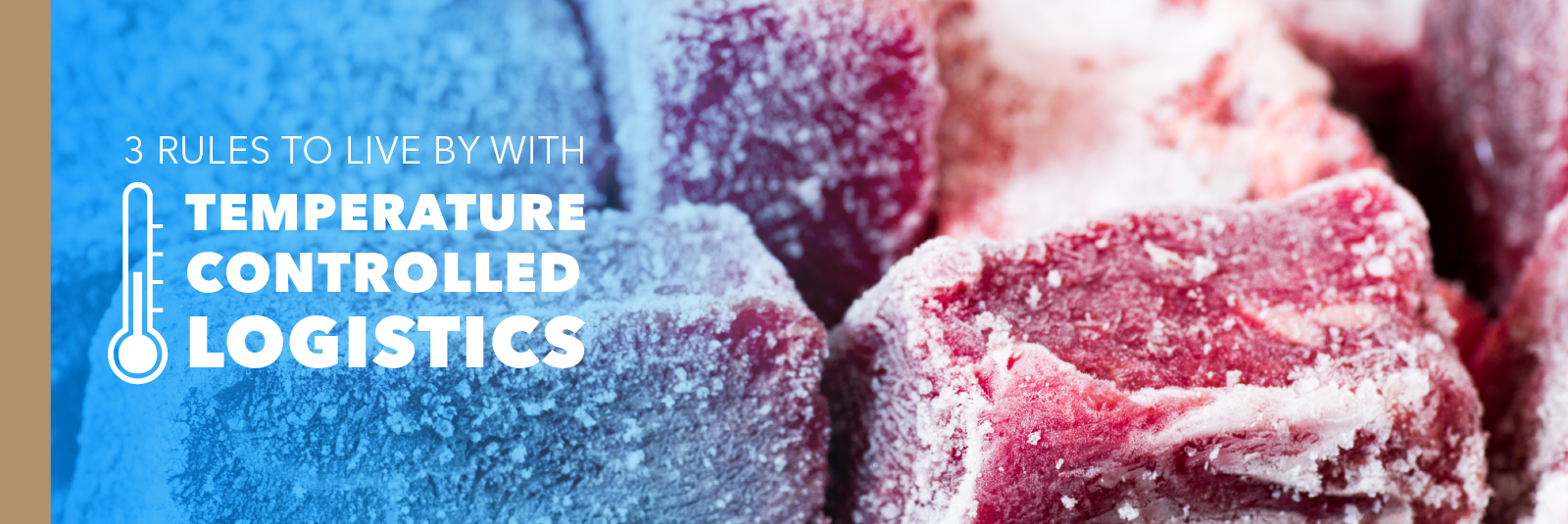Temperature controlled, or cold chain, logistics is the storage, preservation, and transport of cargo that is temperature sensitive. These products can be anything from fresh produce and frozen foods to flowers and pharmaceuticals. If proper temperatures aren’t maintained, it could pose a threat to the health and safety of the public, as well as rack up millions of dollars worth of lost goods.
Cold chain logistics are complex—all companies operating within the chain must be aware of the latest regulations and standards in order to ensure cargo arrives safely. Here are three rules every shipper should live by when dealing with temperature controlled logistics:
1. Work With Cold Chain Experts
Keep in mind that cold chain is a specialized form of supply chain logistics and thus requires specialized knowledge. It’s critical that shippers work with experts in cold chain logistics. This includes the producers, manufacturers, carriers, and other vendors involved from beginning to end in the process. These experts need to know how to handle these sensitive shipments and have experience troubleshooting if problems arise. You want experience on your side with this type of cargo.
2. Establish Processes and Responsibilities For All Involved PartiesGenerally speaking, carriers are responsible for maintaining the temperature of the cargo, while manufacturers and shippers are responsible for communicating the cargo’s optimal conditions (and the processes to keep them optimal) to all involved parties. For shippers, you need answers to these questions to successfully manage cold chain logistics:
- What standards or regulations must be met with this cargo?
- What is the acceptable temperature and humidity range? The margins of error?
- What are all of the cargo’s touchpoints?
- What are acceptable levels of risk? Where are potential areas of risk?
- What are the situations or conditions that would unequivocally compromise the integrity of the product?
- What temperature controls are in place? Back up temperature controls?
- Where will the cargo be placed for transport? Is there airflow?
- What temperature control technology is being used? How is the temperature monitored?
While some details will vary based on the cargo’s contents, temperature-controlled logistics requires using strict, consistent standards across a supply chain. Shippers need to collaborate will all parties to define who is responsible, what steps need to be taken, and how to implement checks and balances.
3. Protect Your Shipment
Whether dealing with temperature-controlled goods or not, you’ll inevitably perform a risk assessment when you determine what needs to be shipped and the transport method. But it’s clear there’s inherently more risk with temperature-sensitive cargo than most other types.
To safeguard products from loss or damage in the cold chain, get all-risk insurance. This type of coverage offers shippers the best protection because includes:
- Door-to-door coverage
- Payment regardless of shipper’s ability to prove carrier negligence
- Payment for losses outside carrier control
- Payment for the full value of lost or damaged goods
Successfully managing temperature-controlled logistics requires a high level of expertise, collaboration, and technology to help mitigate risk and ensure a safe delivery of the products. For more information on how to mitigate your risk with these sensitive shipments, contact us.
